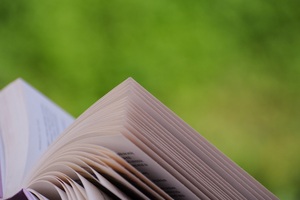To understand the genre of magical realism’s union of magic and reality one must first understand its history. Before magical realism there was postmodernism, and before that there was modernism. The modernist style of writing, that started in the confusion that came after The Great Depression era, valued the search for meaning and subsequently finding truth. Time past and countries struggled getting their bearings in an economically ravaged, war torn world. Those bearings came after the second world war. WWII helped to draw the lines between good and evil. Finally many countries could see where they stood in the world. There was no need to search for meaning. In fact, the postmodernists rejected the idea of a pure form of truth. Then came magical realism. It also rejected a modernist principle, but it also rejected the one postmodernists typically shared with that movement: reality. Magical realism differed from modernism, in that, “it shies away from both the radical theoretical pronouncements on the nature of true reality and from extreme formal experiments to evoke a sense of this reality in the reader.” (Herman, 122)
Magical realist not only weave the extraordinary with that of the realistic, the roots of their narrative is usually grounded in history. The literature explores a wide range of themes. Everything from political upheaval to societal and cultural issues to love. Magical realist, especially Latin American writers, have a history of being influential and affecting cultural attitudes. (Lindroos)
Below is a list of 5 key magical realist authors:
1. Gabriel García Márquez
Gabriel García Márquez was born in Colombia, but has lived in North America for much of his publishing history. Mexico and New York are listed in his biography on the Nobel Prize official site. His major works include One Hundred Years of Solitude (1967), his most critically acclaimed work, and Love in the Time of Cholera(1985), which was adapted into the 2007 film of the same name.
He is arguably the most influential writer within the magical realist movement. With the publication of One Hundred Years…, Love in the Time… (above), and many more important works, Márquez headed the Latin American literary boom and helped to put Latin American writers in the spotlight.
2. Isabel Allende
Isabel Allende is a popular Chilean magical realist. She has been a citizen of the United States since 2003 and lives in California. Her first novel, House of Spirits(1982) won Chile’s Best Novel of the Year award. She’s been winning prizes ever since. In 1987 she was nominated for the Los Angeles Times Book Prize.
House of Spirits tells of a family’s history with the backdrop of a Latin American country in political turmoil. She finished the novel following the death of her grandfather. It’s in part autobiographical, seeing how it started with a letter she began writing to the same grandfather .
3. Carlos Fuentes
Carlos Fuentes is a Mexican magical realist. He’s popular throughout many Latin American countries and is seen as Mexico’s most prized author. He has garnered critical acclaim with novels like Where the Air is Clearer(1958). Fuentes also gained popular success with his New York Times bestselling novel The Old Gringo(1985), a novel about the writer Ambrose Bierce.
Nobel laureate, Toni Morrison is widely thought of as a magical realist author, with her novel Beloved (1987) being cited often as an example, but she’s also a controversial addition to the movement’s pantheon. This is because in the eyes of many critics magical realism is held as an exclusively Latin American movement. No matter the origin or roots, magic realism has become a more universal term with many writers’ works, past and present, being designated to this writing mode.
Beloved is a novel about a woman, who is an escaped slave, and her daughter being haunted by the ghost of the daughter she tried to save through death. The political backdrop of this novel is the American Civil War.
5. Téa Obreht
Téa Obrent is one the latest authors whose work has been placed under the heading magical realism and further proof of the expanding use of the label. Her first novel, The Tiger’s Wife (2011), was a New York Times best seller and gained much critical acclaim. It was the winner of the 2011 Orange fiction prize and was nominated for a National Book award. The book is about a doctor uncovering the mystery behind her grandfather’s death. The Balkan Wars are the backdrop to the main story.
Works Cited
Herman, Luc. Concepts of Realism. Columbia: Camden House, Inc. 1996. Print.
More, Lindsey. “Magical Realism.” Postcolonial Studies at Emory. Emory University. Fall 1998. Web. 26 April 2012.
Lindroos, Ricky. “The Politics of Magical Realism.” Voices. Yahoo!. 29 Mar. 2011. Web. 26 April. 2012.
“Bio.” “Timeline.” Official website of Isabel Allende. N.p. Web. 26 April. 2012.
“Téa Obreht.” Official website of Téa Obreht. N.p. Web 26 April. 2012.



